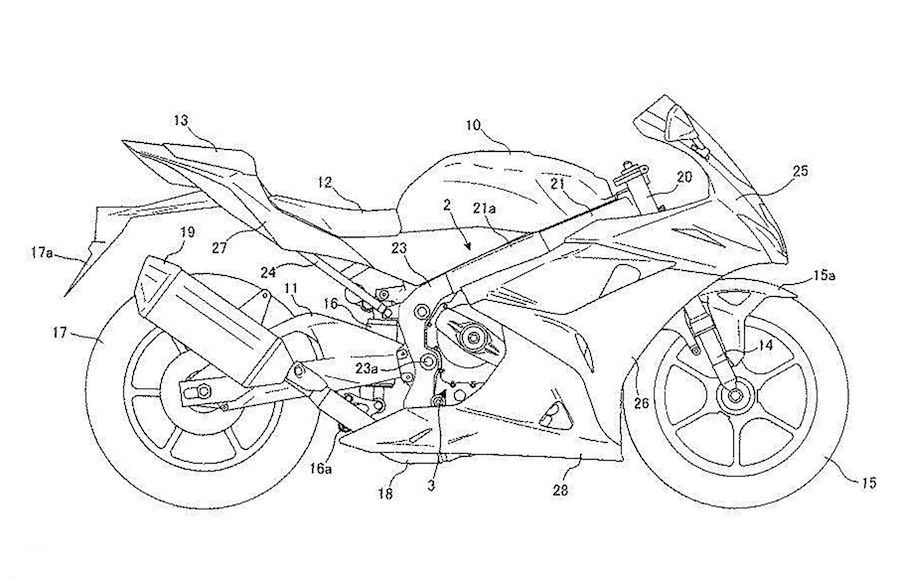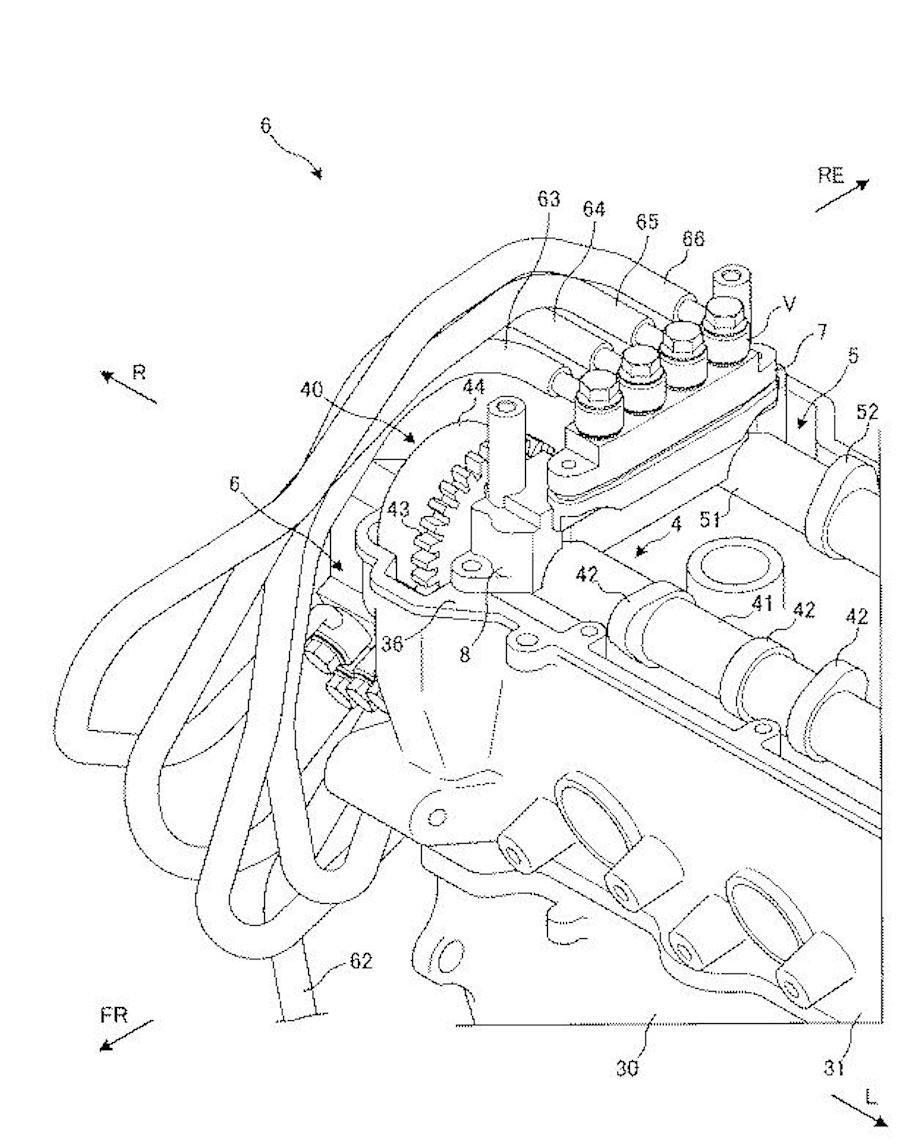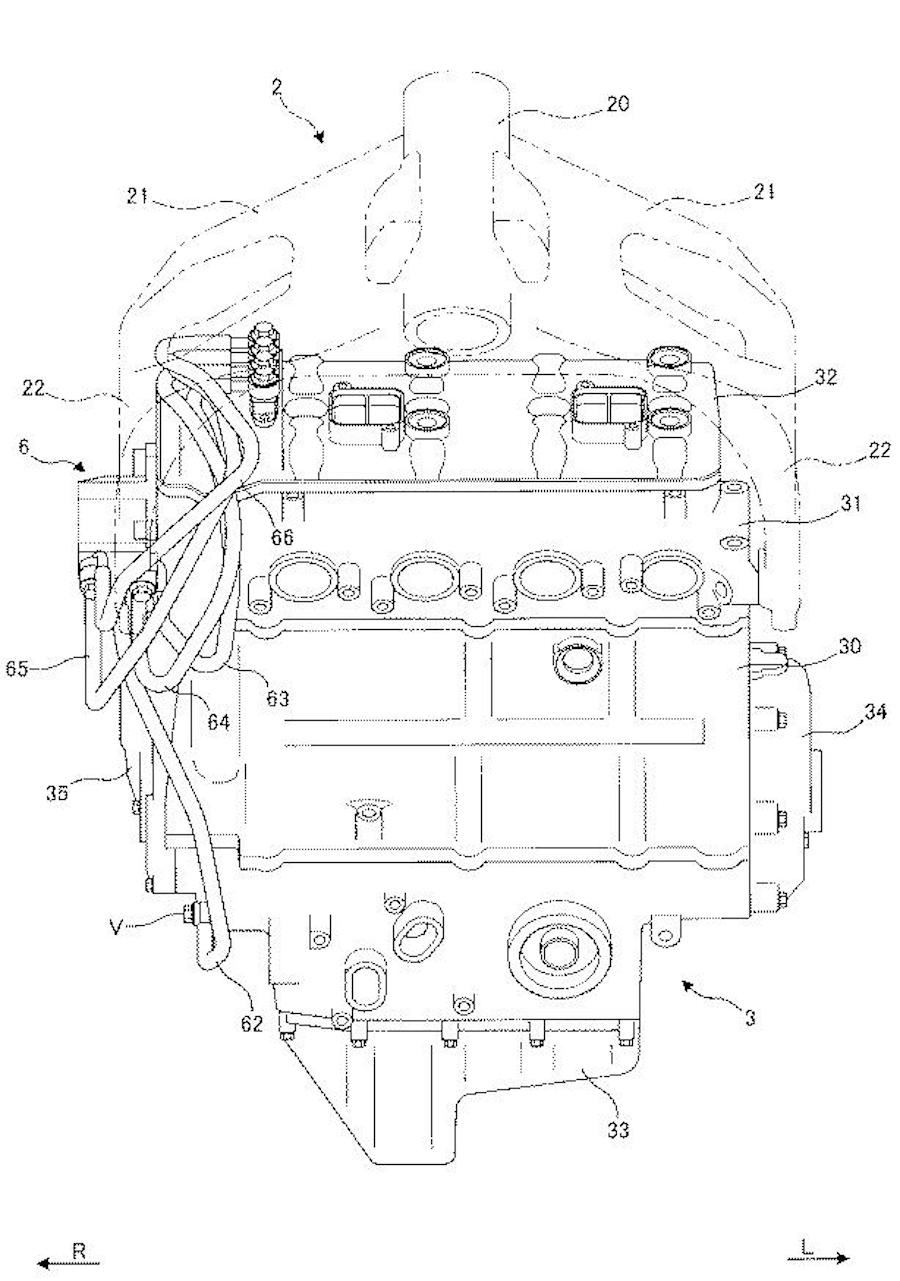Next-generation Suzuki superbike takes shape
Is this Suzuki’s next GSX-R1000? All indications are that it could very well be. The image comes from a new patent application filed in Japan and includes the outline of bodywork that’s clearly evolved compared to the existing bike’s design.
We already know that Suzuki is developing a revised version of the GSX-R1000’s four-cylinder engine, and that’s the focus of the new patent as well. But for the first time this document includes an image of a complete bike, and it’s distinctly different from the existing model.
The current GSX-R1000 is in its third year of production, and with tighter Euro 5 emissions coming in Europe it must get a mid-life revamp within the next year or so.
Technically, several recent patents from Suzuki, including this new one, show that a solution to the emissions quandary is to apply a new variable valve timing system. While the current GSX-R1000 was the first 1000cc-class superbike to have VVT, its system is an unusual all-mechanical design that uses centrifugal force to alter the intake valve timing depending on engine revs. It’s a setup Suzuki originally developed for the GSX-RR MotoGP bike to skirt regulations that ban hydraulic and electronic variable valve timing systems.
While effective in getting around those racing rules, the system isn’t as practical or as flexible as the sort of hydraulically-operated VVT that’s used by Ducati on its models latest Multistrada and Diavel.

Suzuki’s solution
Unsurprisinly Suzuki’s new VVT design is much more like the Ducati arrangement.
Compared to the current design, which operates only on the intake camshaft, the new idea will have VVT on both the intake and exhaust camshafts, adding an extra level of effectiveness. Using hydraulics to alter the cam timing, and electronics to control when the cam timing is changed, it also means the whole system can be computer-controlled.
This will tailor the way valve timing is changed in response to throttle openings, speed, gear and countless other inputs, whereas the existing design can only respond to engine revs.

Similar but different
The designs shown in the patent reveal a motorcycle with the same basic engine as the current model; the oil pipelines for the hydraulic VVT are all added to the outside of the engine rather than moulded into its castings. It also has the same frame and swingarm as the existing GSX-R1000. That all makes sense for a mid-life update but the styling is sure to be tweaked to reflect the engine updates.

Style clues
The side-on image in the patent shows an outline that’s clearly a classic GSX-R, but one that isn’t quite the same as any existing or previous model carrying the name. The nose is sharper, the side panels are reshaped with a new vent layout and the seat unit is a fraction slimmer.
VVT v ShiftCam
Both Suzuki’s and Ducati’s variable valve technology is again very different from German brand BMW’s solution, which has been applied to its 1250 horizontally opposed engines as well as its 1000cc inline-four cylinder machines for the 2019 model year. If you’re struggling to get your head around their heads, er, head to page 86 where we lift the head covers off the BMW engines and explain the system in detail.

By BEN PURVIS